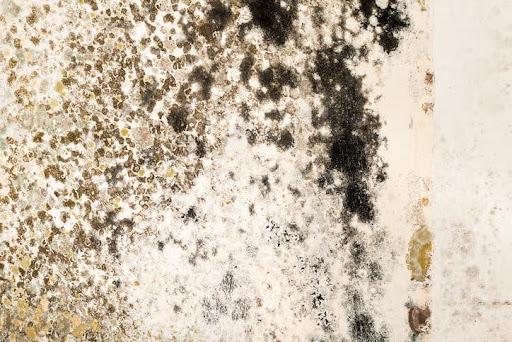White Mold vs. Black Mold, Health Risks, and Remediation
June 15, 2024

It doesn’t take much for mold to thrive – all it needs is moisture, and it can spread quickly.
Yet not all mold is created equal. Let’s dive into the different types of mold, including the differences between white mold and black mold, and the health risks you should be aware of when it comes to black mold.
Understanding Mold Types
Molds are a diverse group of fungi that can be found in various environments, including indoor and outdoor settings, and they come in all colors of the rainbow. Some molds grow indoors on damp surfaces such as wallpaper, carpets, and fabric; others are more commonly found on food or plants.
One of the most dangerous types of mold is Stachybotrys chartarum, also known as black mold. This type of mold is dark green or black in color and thrives in water-damaged indoor environments, such as flooded buildings, leaky roofs, and poorly ventilated areas.
Distinguishing White Mold: Characteristics, Risks, and Identification
White mold, also known as Sclerotinia sclerotiorum, is a type of fungus that can affect various plants, crops, and even indoor environments. Here are some of the characteristics associated with white mold:
It Appears Fluffy: White mold typically appears as fluffy, cotton-like growth on the surface of plants, soil, or organic matter. It often starts as small white spots and can quickly spread, covering large areas if left untreated.
Its Texture Varies: The texture of white mold can vary depending on its stage of development. When young, it may appear soft and fuzzy, while older colonies can become denser and more compact.
It Affects Plants: White mold can infect a wide range of plants, including vegetables, fruits, ornamental plants, and agricultural crops such as beans, lettuce, cabbage, tomatoes, and strawberries. Plants infected with white mold may exhibit wilting, yellowing, or browning of leaves, stems, or fruits. Infected tissues may also become water-soaked and develop a soft, mushy texture as the fungus consumes them.
It Thrives in Humidity: White mold grows well in cool, humid environments. It is commonly found in areas with poor air circulation and high moisture levels, such as greenhouses, fields with dense plantings, and storage facilities.
White mold can cause significant economic losses in agriculture by reducing crop yields and quality. In severe cases, it can lead to crop failure.
While white mold primarily affects plants, it can also produce toxic compounds called mycotoxins that may pose risks to human and animal health if ingested. Additionally, inhaling airborne spores can trigger allergic reactions or respiratory problems in sensitive individuals.
White Mold vs. Efflorescence: Recognizing the Difference
White mold and efflorescence are two different phenomena that can appear similar, but have distinct causes and characteristics.
White mold is a type of fungus that grows on organic materials. Efflorescence is a crystalline deposit of salts that forms on the surface of masonry, concrete, or other porous materials. It’s typically associated with moisture infiltration into building materials and often occurs in basements, crawl spaces, or areas with water leaks or inadequate drainage.
Efflorescence doesn’t pose health risks to people and is mainly a cosmetic issue, though it may indicate underlying moisture problems that could lead to structural damage or mold growth if left unaddressed.
The Health Implications of Black Mold: Symptoms and Dangers
Black mold can cause various health problems in people, including respiratory Issues such as bronchitis and pneumonia. People with suppressed immune systems, or who have asthma or allergies, are especially at risk.
Health complications can be severe. The mycotoxins produced by black mold can cause adverse health effects when ingested, inhaled, or absorbed through the skin. Mycotoxin exposure may lead to symptoms such as headache, dizziness, fatigue, nausea, vomiting, diarrhea, and abdominal pain. Serious cases of mycotoxicosis can result in organ damage or neurological effects.
Some people might develop hypersensitivity pneumonitis, an inflammatory lung disease, after prolonged exposure to black mold or other fungi. Symptoms may include shortness of breath, coughing, fever, and flu-like symptoms.
If you suspect black mold growth in your environment, it's important to address the issue promptly through proper identification, remediation, and preventive measures to minimize health risks.
Call DRYmedic for Mold Remediation Services
Mold removal can be a complex process, and one that is best left to the professionals. If you’ve discovered mold in your home or business, give DRYmedic a call: (470) 893-2435. Our mold remediation process will guarantee that every area affected by mold is thoroughly evaluated and safely restored.